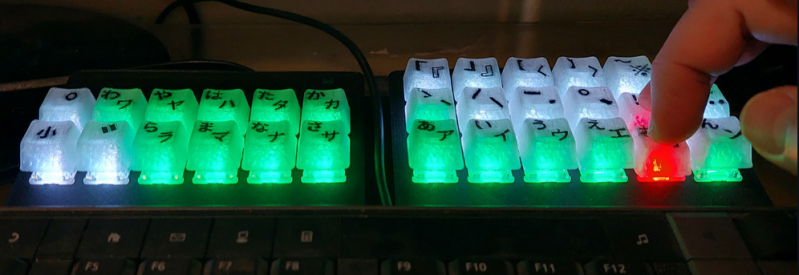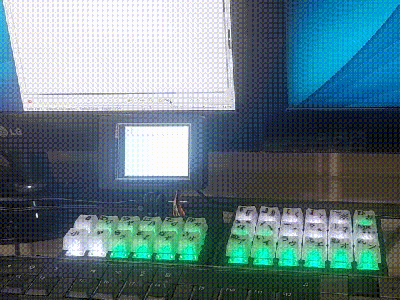We love to watch your projects grow as much as you do. Really, we’re like proud grandparents around here. So it’s great to see that [Mac Cody] is back with the KanaChord Plus Keyboard, which supports an astounding 6,165 Kanji as well as 6,240 of the most common Japanese words that contain Kanji. This is all in addition to supporting the Kana characters, which make up the rest of Japanese writing (more on that in a minute).
If you need to input Japanese, this is a dream come true. If you’re trying to learn Japanese in the first place, this could be exactly what you need to become fluent.

Without getting into it too much, just know that the Japanese writing system is made up of Kanji, which are Chinese characters, Hirigana, and Katakana. The latter two are collectively known as the Kana, and there’s this table that lays out the pairing of vowels and consonants. For [Mac Cody], it was this layout that inspired this chording keyboard that covers all three.
 What this keyboard actually does is generate Unicode macros to render Japanese characters using chords — pressing multiple keys at once as you would on a piano. The most obvious improvement aside from the huge gain in characters is the display.
What this keyboard actually does is generate Unicode macros to render Japanese characters using chords — pressing multiple keys at once as you would on a piano. The most obvious improvement aside from the huge gain in characters is the display.
As with the original KanaChord, one of the great features of the KanaChord Plus is that it uses color in order to indicate character type, Kana mode, and even provide error feedback. Another is the slide switch that selects one of three Unicode key sequences in order to support different computer platforms.
But the touchscreen display is the addition where things get really interesting. As Kana are typed, an incremental Input Method Editor (IME) searches the embedded dictionaries to display an ordered list of Japanese words and Kanji that the user can scroll through and select.
Just like the original, the brains of this operation is a Raspberry Pi Pico. [Mac Cody] used an Adafruit NeoKey 5×6 Ortho Snap-Apart keyboard PCB and 30 Cherry MX switches that we choose to believe are blue. Looking toward the future, [Mac Cody] plans to support the Pico 2, and will update GitHub when everything is ready. Again, there’s a ton of detail in the hardware section, so be sure to check that out.
